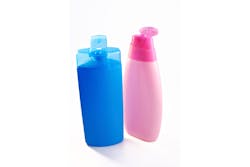Contaminant of the Month: Microbeads
What are they?
- Microbeads are small, engineered particles that have numerous medical, industrial and cosmetic uses.
- Some are made of polyethylene, polymethylmethacrylate or polystyrene.
- Microbeads in cosmetics are used as abrasives in skin exfoliants/facial cleaners, soaps, sunscreens and toothpastes.
- Nonbiodegradable plastic microbeads are present in numerous cosmetics.
- They are found in oceans and surface waters in large numbers and in aquatic animals.
- Concerns have been raised about their potential effects on aquatic life when ingested.
- Numerous states are banning them from cosmetics.
Occurrence
- Microbeads have been detected in many surface waters including the Great Lakes and the Hudson River. They would likely be present in any receiving water from a sewage treatment plant.
- Seventy-four percent of discharges from wastewater treatment facilities in New York state contained spherical or speckled microbeads.
Spherical or speckled microbeads represent only about 6 percent of microbeads in consumer products. Most are irregular and more difficult to detect. - One study in Lake Ontario detected counts up to 1.1 million plastic particles per square meter, which is an unusual nonvolumetric measurement term.
- In Lake Michigan near Chicago, 17,000 microspheres per square kilometer were measured.
- Microbeads have been detected in more than 200 consumer products.
- One facial cleanser was reported to contain 356,000 microbeads in a 4.2-ounce tube.
- American consumers purchase cosmetic products containing more than 573,000 pounds of microbeads each year.
Health effects
- Concerns are mainly associated with the ingestion of microbeads by aquatic organisms that mistake them for fish eggs or other edible particulates.
- Microbeads are not digestible, so it is possible they could accumulate in organs of animals that are edible by humans, such as mussels.
- Since they are plastics, microbeads absorb nonpolar organic chemicals like polychlorinated biphenyls (PCBs) from water, so they are a potential transport mechanism for toxic chemicals into animals.
Water treatment
- Microbeads range in size from less than 6 µm to 1,000 µm (micrometers, microns).
- For comparison, bacteria sizes range from about 0.3 µm to 60 µm, spores from 3 µm to 40 µm, Giardia cysts from about 6 µm to 14 µm, and Cryptosporidium oocysts from about 4 µm to 6 µm.
- Most wastewater treatment plants that filter would not be able to remove a high percentage of small particles. Fortunately, drinking water filtration requirements aimed at the removal of protozoa such as Cryptosporidium must produce finished water with turbidity less than 0.3 Nephelometric Turbidity Unit (ntu), so they are capable of removing substantial percentages of particles in the 4 µm to 6 µm size range and above. However, if the loading of the small particulates is very high, then many could pass the filters.
Regulation
- No current federal regulations exist, but a Microbead-Free Waters Act of 2015 (HR-1321) is in committee. Numerous states including New York, California, Colorado, Connecticut, Illinois, Indiana and others have or will soon ban the use of nonbiodegradable plastic beads in consumer products.
- Most bans will take effect by 2018-2020.
- Several citizen groups have been active in promoting bans.
- Consumer product companies such as Unilever, Johnson & Johnson, and Procter & Gamble Co. have agreed to remove microbeads from their products during the next few years.
Dr. Joe Cotruvo is president of Joseph Cotruvo and Associates, LLC, Water, Environment and Public Health Consultants. He is a former director of the EPA Drinking Water Standards Division.
